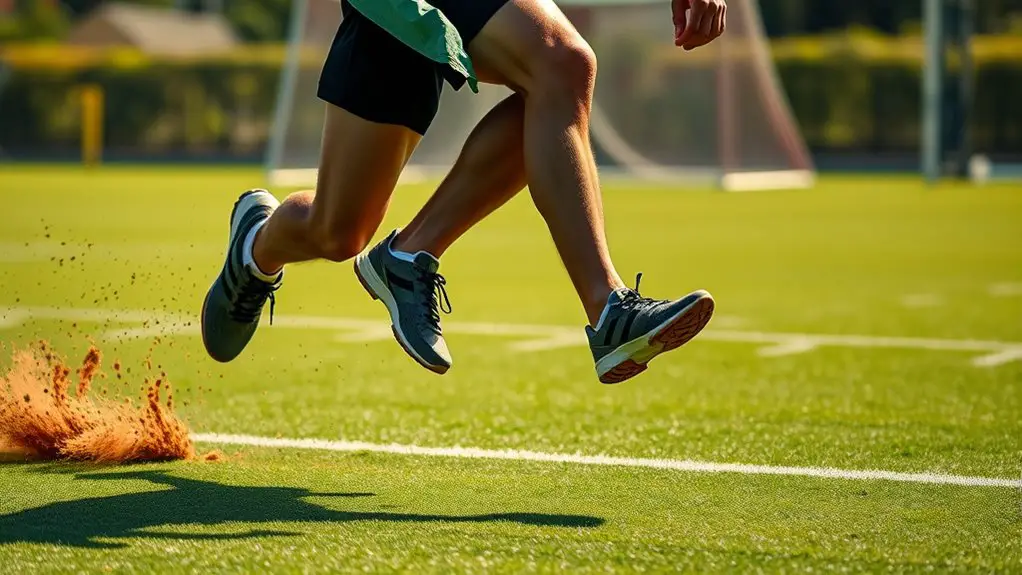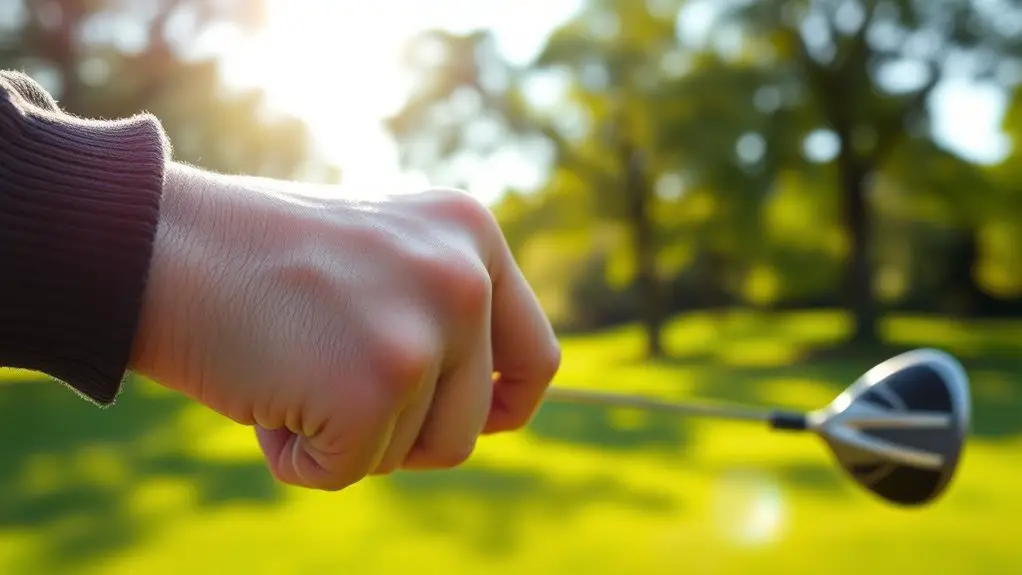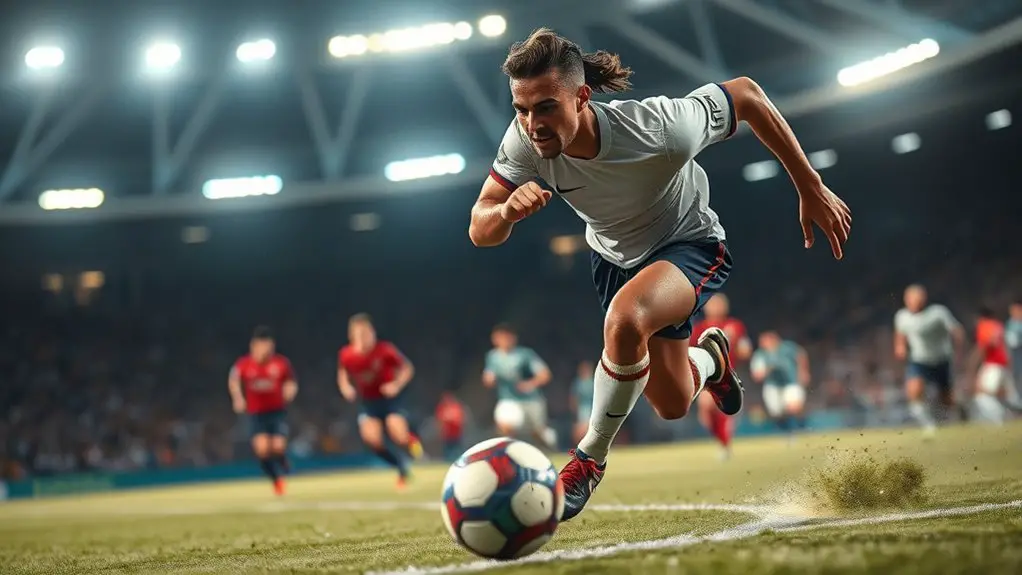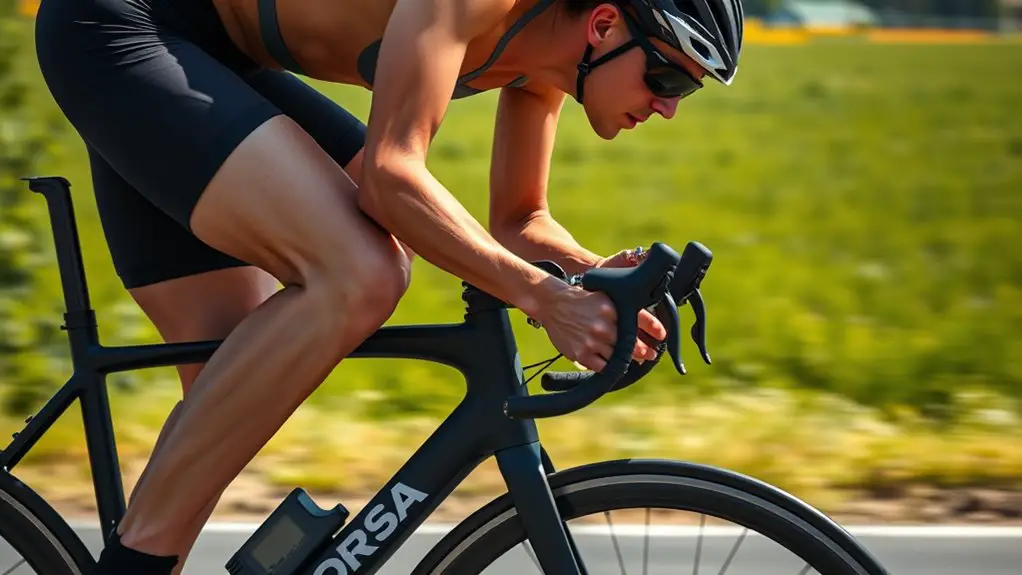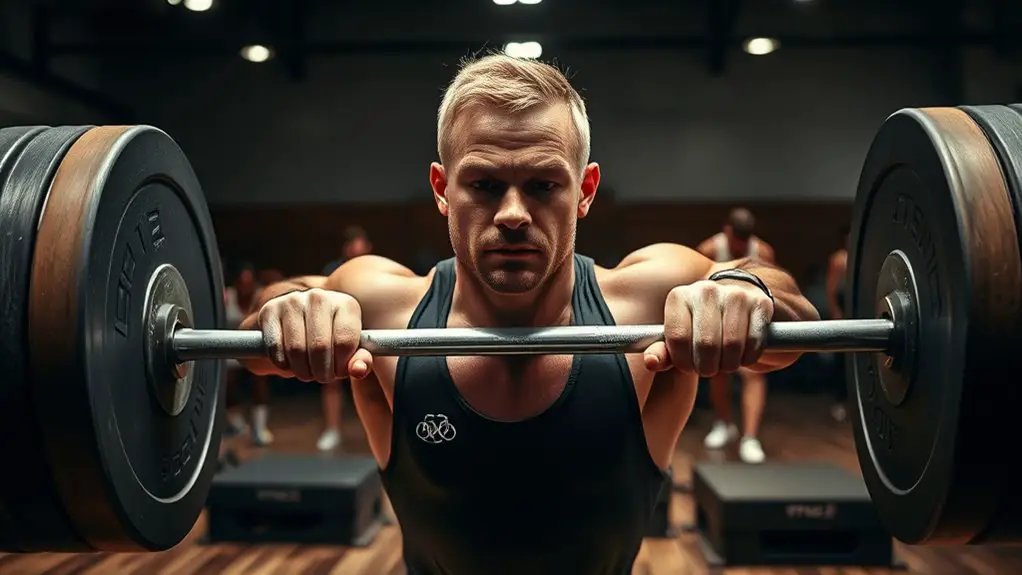To develop explosive lateral movement, focus on enhancing agility, strength, and mobility. Engage in lateral drills like ladder workouts and cone exercises to improve your foot speed. Strength training exercises such as lateral lunges and single-leg deadlifts target key muscles essential for power. Incorporate plyometric movements like lateral bounds for explosive strength. Don't forget the importance of flexibility, dynamic stretching, and sport-specific techniques to maximize your performance. There's much more to uncover for optimizing your lateral skills.
Understanding the Importance of Lateral Movement
Lateral movement is essential for athletes in nearly every sport, as it enhances agility, balance, and overall performance. You might not realize it, but the ability to move side to side can be a game-changer. Think about it: in sports like basketball, soccer, or tennis, quick lateral shifts can mean the difference between scoring and being outmaneuvered. That's where lateral movement benefits come into play.
Engaging in agility training isn't just about speed; it's about mastering those swift, side-to-side motions that keep you nimble and unpredictable. When you focus on lateral drills, you're also improving your reaction time and coordination, making you more versatile on the field or court. Additionally, incorporating strength training into your routine can enhance muscle power for those rapid directional changes. So, if you're serious about elevating your game, embracing the agility training importance is key. It's time to release your potential and enjoy the freedom that comes with being a dynamic athlete!
Key Muscles Involved in Lateral Explosiveness
To achieve explosive lateral movement, understanding the key muscles involved is essential. Your body's ability to move quickly side to side hinges on the interplay of various muscle groups. Here's a breakdown of these muscles and their functions:
| Muscle Group | Function | Importance |
|---|---|---|
| Hip Muscles | Generate powerful thrust | Essential for lateral speed |
| Core Stability | Maintain balance | Supports overall movement |
| Ankle Strength | Stabilize movement | Prevents injury |
| Glute Activation | Propel movement | Crucial for explosive power |
| Quadriceps Engagement | Drive knee movement | Key for speed |
| Hamstring Flexibility | Allow for range of motion | Enhances agility |
| Calf Power | Control landing | Supports quick direction changes |
| Adductor Function | Aid in lateral movement | Enhances side-to-side agility |
Focusing on these muscle groups will empower your lateral explosiveness! Additionally, prioritizing mobility training can enhance your overall athletic performance and reduce the risk of injuries.
Essential Drills to Improve Lateral Agility
To boost your lateral agility, incorporating ladder drills and cone drill variations into your routine is key. These exercises not only enhance your foot speed but also improve coordination and reaction time. Additionally, consistency in practice leads to significant improvements in athletic performance. Let's explore how to effectively implement these drills into your training.
Ladder Drills Techniques
When you want to enhance your lateral agility, ladder drills can be incredibly effective. These drills offer a variety of ladder variations, allowing you to mix things up and keep your training fresh. Start with basic footwork patterns like the two-foot hop or lateral shuffles, focusing on quick, precise movements. As you gain confidence, progress to more complex patterns, like in-and-out hops or sideways crossover steps. Remember, the goal is to improve your speed and coordination while maintaining control. Incorporating these ladder drills into your routine not only boosts your agility but also adds an element of fun, giving you the freedom to express your athleticism. So grab that ladder and let's get moving!
Cone Drill Variations
While ladder drills lay a solid foundation for agility, cone drills take your lateral movement to the next level. Cone drill variations are essential for refining your quickness and explosiveness. Here are some drills you can incorporate into your routine:
| Drill Name | Description | Focus Area |
|---|---|---|
| 5-10-5 Shuttle | Sprint to the cone, touch, return | Acceleration |
| T-Drill | Move laterally, then sprint | Change of direction |
| Illinois Drill | Zig-zag through cones | Agility |
| Lateral Cone Hop | Side-to-side jumps between cones | Lateral movement |
| Box Drill | Shuffle around a square of cones | Coordination |
These variations will help you release your potential and enhance your lateral movement, giving you the freedom to dominate on the field.
Strength Training Exercises for Lateral Power
Developing explosive lateral movement requires a solid foundation of strength, and incorporating specific exercises into your training regimen can make a significant difference. To build lateral strength, start with exercises like lateral lunges and side squats, which target your glutes and quads. These will help you push off powerfully in any direction.
You can also incorporate resistance bands into your routine for lateral band walks, creating tension that forces your muscles to work harder. Deadlifts, particularly single-leg variations, are fantastic for enhancing core stability and strength, essential for explosive training. Additionally, exercises like Olympic lifts can greatly improve your overall power and coordination, further contributing to your lateral movement capabilities.
Don't forget about rotational movements like medicine ball throws, which engage your entire body while mimicking the dynamic nature of lateral movement. By integrating these exercises, you'll not only develop strength but also prepare your body for the quick, explosive bursts needed in sports and daily activities. Embrace the freedom of movement!
Incorporating Plyometrics for Explosive Movement
To achieve explosive lateral movement, incorporating plyometrics into your training routine is essential. Plyometric exercises, like lateral bounds and box jumps, can greatly boost your explosive strength. These dynamic movements engage your fast-twitch muscle fibers, helping you develop the power needed for quick lateral shifts.
Start with basic exercises to build your foundation, then progress to more advanced variations as your strength improves. Focus on form and control to maximize effectiveness and reduce the risk of injury. You can do these exercises anywhere, from a gym to a park, giving you the freedom to train where you feel most comfortable. Additionally, plyometrics improve neuromuscular control, leading to more fluid and efficient movements.
Incorporating plyometrics not only enhances your explosive power but also improves your agility and coordination. Embrace the challenge, and soon you'll notice a marked improvement in your lateral movement. Remember, consistency is key, so integrate these exercises into your routine and watch your performance soar.
The Role of Flexibility and Mobility
To enhance your explosive lateral movement, flexibility and mobility play vital roles. Incorporating dynamic stretching into your warm-up can prepare your muscles and joints for action, while targeted joint mobility techniques can improve your overall range of motion. By focusing on these aspects, you'll set a solid foundation for more powerful lateral movements. Additionally, incorporating key mobility exercises into your routine can further enhance your movement efficiency and reduce the risk of injury.
Importance of Dynamic Stretching
While many athletes focus on strength and power for explosive lateral movement, the importance of dynamic stretching shouldn't be overlooked. Incorporating dynamic flexibility into your warm up routines is essential for enhancing your performance. These stretches prepare your muscles and joints for the demands of lateral movements by increasing blood flow and improving range of motion. Think of dynamic stretching as a way to release your body's potential, allowing you to move freely and efficiently. Instead of static holds, engage in movements like leg swings or walking lunges that mimic the actions you'll perform during training or competition. By prioritizing dynamic stretching, you'll set the foundation for powerful, explosive lateral movements, helping you achieve your athletic goals with greater ease and confidence.
Enhancing Joint Mobility Techniques
Enhancing joint mobility is essential for maximizing your explosive lateral movement. When your joints move freely, you'll feel liberated and agile, allowing for quicker, more powerful side-to-side motions. Incorporating dynamic flexibility exercises into your routine is key; these movements prepare your body for action while increasing your range of motion. Think of leg swings, hip circles, and lunges with a twist—these not only loosen tight muscles but also improve joint stability. As you focus on your joint mobility, you'll notice an increase in your overall performance, making you feel more connected to your body. Embrace these techniques, and you'll release your full potential, transforming how you move and perform in any sport or activity.
Sport-Specific Techniques for Lateral Movement
Developing sport-specific techniques for lateral movement can greatly enhance your performance in various athletic disciplines. To master lateral footwork, you should focus on the unique demands of your sport. For basketball, practice quick side shuffles to defend against opponents, while in soccer, work on weaving movements to evade defenders. These sport strategies not only improve agility but also help you react faster in competitive situations.
In tennis, incorporate lateral drills that mimic the side-to-side movements needed to reach the ball effectively. For volleyball, practice sliding steps to position yourself for peak spiking or blocking. Additionally, integrating ladder drills for quick feet into your training can further boost your lateral agility and overall performance.
Monitoring Progress and Setting Goals
Progress in lateral movement can be a rewarding journey, but without a solid plan, it's easy to lose focus. You need to embrace progress tracking and goal setting to stay on course. Start by defining clear, achievable goals that resonate with your desire for freedom and growth. Whether it's improving your speed or agility, write them down to keep them visible.
Regularly assess your progress by taking measurements or recording times during drills. This way, you can see how far you've come and where you need to improve. Celebrate small victories along the way; they're essential for motivation. Additionally, consider using the SMART criteria for goal setting to ensure your objectives are well-defined and attainable.
Adjust your goals as necessary, allowing for flexibility in your training. Embrace the journey and enjoy the freedom that comes with each step forward. With consistent tracking and thoughtful goal setting, you'll find yourself not just improving your lateral movement, but thriving in your overall athletic performance.
Frequently Asked Questions
How Long Does It Take to See Improvements in Lateral Movement?
Think of your lateral movement like a seed growing into a tree. With consistent watering—your training—you'll start seeing improvements in a few weeks. Typically, you might notice noticeable progress in about 4 to 6 weeks if you're dedicated. Just like a tree needs time to grow strong roots, your lateral movement progress relies on training consistency. Stay patient and committed, and soon enough, you'll be dancing through your movements with newfound freedom.
Can Nutrition Impact Lateral Explosiveness Training Results?
Absolutely, nutrition can greatly impact your training results. When you focus on nutrition strategies, you're fueling your body for peak performance. Incorporating dietary supplements, like protein or creatine, can enhance muscle recovery and growth. If you're looking to improve explosiveness, a balanced diet rich in whole foods will support your energy levels and overall strength. So, don't underestimate the power of what you eat; it can make all the difference in your training.
What Common Injuries Should I Be Aware of During Training?
When you're training, beware of bothersome injuries like ankle sprains and knee injuries. These pesky problems can hinder your progress and limit your freedom. Ankle sprains often occur during quick lateral movements, while knee injuries can arise from improper form or overexertion. It's essential to focus on proper technique and warm up adequately to avoid these issues. Keep your body balanced, and you'll maximize your potential while minimizing the risk of injury.
Are There Age Restrictions for Starting Lateral Movement Training?
There aren't strict age restrictions for starting lateral movement training, but age considerations are important. If you're training youth, it's best to focus on foundational skills before diving into more explosive movements. Young athletes should build strength and coordination first. As you get older, you can explore advanced techniques to enhance agility. Just remember, freedom in movement comes with proper preparation and understanding your body's limits, regardless of age.
How Often Should I Practice Lateral Movement Drills Weekly?
To improve your lateral movement frequency, aim for at least three to four sessions a week. This'll help you build strength and agility without overwhelming your body. Make sure to balance your training schedule with rest days so you can recover and avoid burnout. You want to feel free and energized during your workouts, not drained. Consistency is key, so stick with it and watch your progress unfold!
